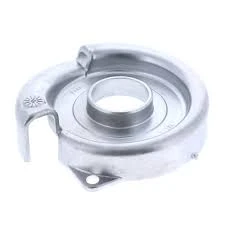Mobile:+86-311-808-126-83
Email:info@ydcastings.com
fan impeller types
Understanding Fan Impeller Types A Comprehensive Guide
Fan impellers are crucial components in a variety of applications, ranging from household appliances to industrial machinery. They are designed to convert rotational energy into kinetic energy, facilitating air or fluid movement. Understanding the different types of fan impellers can enhance efficiency and effectiveness in specific applications. This article delves into the primary types of fan impellers, their features, and their applications.
1. Axial Impellers
Axial impellers are among the most common types of fan impellers. They work by moving air in a direction parallel to the axis of rotation. The blades of axial impellers are typically shaped like airplane wings, allowing for effective airflow with minimal resistance. These impellers are known for their high flow rates and are often used in applications where large volumes of air are required, such as cooling fans in computers or HVAC systems.
There are subcategories of axial impellers, including propeller fans and tube axial fans. Propeller fans are simpler in design and are often used in residential and commercial ventilation, while tube axial fans are more sophisticated and suitable for high-pressure applications, such as dust extraction in industrial settings.
2. Centrifugal Impellers
Unlike axial impellers, centrifugal impellers move air or fluids outward from the center of the impeller, utilizing centrifugal force. These impellers are characterized by a circular design with blades that curve backward. This design allows for higher pressure increases, making centrifugal impellers ideal for applications that require moving air against higher resistance, such as in blowers, air conditioning systems, and vacuum cleaners.
Centrifugal impellers can be classified as forward-curved, backward-curved, and radial-blade impellers. Forward-curved impellers are efficient at lower speeds and are typically used in fan coils and air handling units. Backward-curved impellers offer high efficiency and are often found in commercial ventilation applications, while radial-blade impellers are used in applications requiring high pressures.
fan impeller types

Mixed-flow impellers combine the principles of both axial and centrifugal designs. They move air both axially and radially, providing a balanced performance that is beneficial in various applications. Mixed-flow impellers offer moderate pressure increases while maintaining high flow rates, making them versatile for use in ventilation systems and fans that require a compact design.
These impellers are particularly effective in situations where space is limited, as they can function efficiently in smaller formats, making them suitable for ceiling fans and compact HVAC units.
4. Turbo Fans
Turbo fans, or turbojet fans, are high-performance impellers characterized by their unique blade design and high rotational speeds. They are commonly used in aviation but are increasingly being adopted for industrial applications requiring substantial airflow at high pressures. Turbo fans achieve this by adopting a combination of axial and centrifugal designs, enhancing their versatility and efficiency.
These fans are ideal for applications such as gas turbines, where specific performance characteristics are crucial for operational efficiency. Their ability to adapt to varying operational environments makes them indispensable in modern technological applications.
Conclusion
Choosing the right type of fan impeller is essential for optimizing performance in various applications. Axial, centrifugal, mixed-flow, and turbo fans each have unique features that cater to specific needs and conditions. Understanding these differences can enhance system efficiency, improve energy consumption, and ensure optimal functionality for industrial and residential applications alike. Whether you are a manufacturer, engineer, or end-user, recognizing the significance of fan impeller types is critical for achieving the desired operational outcomes.
-
Why Should You Invest in Superior Pump Castings for Your Equipment?NewsJun.09,2025
-
Unlock Performance Potential with Stainless Impellers and Aluminum End CapsNewsJun.09,2025
-
Revolutionize Your Machinery with Superior Cast Iron and Aluminum ComponentsNewsJun.09,2025
-
Revolutionize Fluid Dynamics with Premium Pump ComponentsNewsJun.09,2025
-
Optimizing Industrial Systems with Essential Valve ComponentsNewsJun.09,2025
-
Elevate Grid Efficiency with High-Precision Power CastingsNewsJun.09,2025











